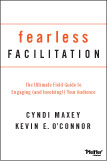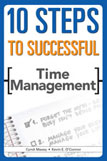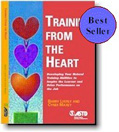Articles
Are You Stuck in Your Crate? How to Change With the New Year
January 01, 2008
by Cyndi Maxey
0 Comment
A few days ago, we folded up the metal crate that once frequently corralled our Labrador retriever, Max, in a corner of our family room. We replaced it with a soft cushion that we figured he would appreciate as a now-mature pup of three. But to our surprise Max did not take immediately to the change. He padded around it, avoiding its presence as if saying; â€This smells like a store—not me; where’s my old thing and what’s with you people?â€
After several demonstrations on our part—which included our lying on the new pad, lying on the pad holding his favorite toy, even putting a peanut-butter coated toy on the pad for enticement—Max finally tried out the new thing—but only barely touching the corner of it. Then, after several days, he began to lie on it fully. Now it is his favorite spot in the room.
Isn’t it funny how one person’s idea of a good change is not another’s? As we all enter the New Year we will most likely be facing the continuation of things known and anticipating the introduction of some new ones. As we approach change that each New Year brings, can we also let go of our own homey “crates� Can we take a mature look at the boundaries that have confined us to the old and accept the challenge and inspiration of the new?
Standing Out on a Panel: A Prepared You Is a Memorable Experience for Them
By Cyndi Maxey, CSP and Kevin E. O’Connor, CSP
When you want to influence where it counts, in the day-to-day lives experience of the audience, there may be no better way than the tried and true panel discussion. Beyond a formal presentation, even beyond a random question and answer session, the panel format brings the “real life†of experts on the panel to the “real life†of the audience. It is an opportunity for a special kind of presentation intimacy.
When you’re asked to participate, say, “Yes!†You will find your participation on a panel to be a terrific way to get very, very clear about what you believe, a highly effective way to see your ideas take root with an eager audience, and will even become a great networking and marketing opportunity for you and your fellow panelists. Panels also give you a chance to communicate your style and share your organization’s best efforts and actions around a theme. They allow for highly individualized styles, so don’t be afraid to be yourself and to be different from the other panelists. This often adds the spice and spark and life to a panel not available any other way.
Continue Reading →
Seven Tips for Savvy Speakers
Most training and development professionals enter the field knowing that their role entails a considerable amount of time in front of learning groups. While today’s learners participate in online, blended, and web-based programs as well as classroom training, they expect the learning leader to be an accomplished presenter—no matter the format!
If it has been awhile since you’ve assessed your presentation style and ability in front of groups, take a moment to review the tips below. Many of them apply to webinar presentations as well as those that are face-to-face. And the tips will help you with other aspects of your job that require making presentations; for example, when you’re called upon to
- present the new training curriculum to your team…
- impress the boss with your budget plan for 2008…
- welcome all the new employees in the auditorium…
- or generally make a great speaking impression in little time.
Remember, every time you present, you are being considered, observed, and judged for bigger and better things.
Conference Speaker Checklist: Top Ten Onsite Tips for Success
- Check out the room. If possible, attend the session in your room that is directly before your session. Look at how seating is used and if it can be adapted in time for your session. Report any questions to HFMA staff or house A-V staff.
- Note where the lighting control is and turn it as high as possible to be able to still see your computer visuals. The house A-V staff probably did not set it as high as it will go; ask for help here if you need it.
- Test the microphone by having someone sit in the back of the room to hear how you sound. Pin it securely on a lapel 4-6†from your chin.
- Review final delivery decisions for yourself and your partner: Who will begin? What slides are most important? Who will manage the remote? Plan ahead so you are not stuck in front fiddling with the projector and conferring with your partner as the crowd that you want to impress is entering.
- Practice the first four minutes alone or with your partner, as this is where you make important first impressions. Know this part without notes so eyes can be out at the audience.
- Plan to speak as much as possible OUT from behind the podium. Walk across the front or down the sides of the room to answer questions if you can. If in partners…
- Plan to include one or two of the top three ways to engage the audience early on: ask a question, ask partners to discuss a topic-related issue, or tell a story and ask them to comment or reflect in some way.
- Select three points in your presentation where audience members will be asked to exchange ideas—in partners, small groups, or in large group Q/A that you control.
- When you do ask the audience to get involved, give very clear movement and timing instructions. In large conference groups, participants especially need to be very clear about what they’re doing and why, and they will do it.
- As Aristotle taught, both credibility and charisma sell ideas. Don’t underestimate the value of you and your stories. Tell ‘em like nobody else will!
Make the Most of Conference Speaking—Onsite Tips for Success
By Cyndi Maxey, CSP, and Kevin E. O’Connor CSP
Many professionals, when asked to speak at a conference, put off doing much about it until the last minute. While most don’t have a fairy godmother, they operate as if they do—as if a tiny person with a magic wand will appear and make everything come together as they walk in the room. If that conference presenter is you, read this article instead of investing in a magic wand. You’ll be able to work your own magic.
The Invitation to Speak Is to You…but Is Really About Someone Else
Being invited to speak at a professional conference is a compliment to your skills and talents. You’ve been asked to share your wisdom; the meeting planner is counting on you as well as your audience. There are those early in their careers who will learn from you as well as peers and higher-ups who will catalog your presentation in their minds to use for future networking, research, and promotions.
Therefore, the first order of business is to consider who is coming to hear you, what do they want, what do they need, and what do you have that will be useful to them.
Culture Counts: How to Access Corporate Culture Before Your Next Presentation!
Most of you have changed jobs a few times in your career; in fact, you will probably have about seven to thirteen jobs in a lifetime. Think for a moment of the jobs you’ve had to date, including your current work. What do you recall about the environments, the people, and the unspoken rules—the cultures of each workplace? Chances are they were all fairly unique. Most of us have experienced several organizational cultures before we’re thirty. We have learned from them and how to adapt to them. The successful presenter can do the same—and yet this important step to presentations planning is often overlooked.
Culture is important. The emotional impact of culture is important. An understanding of culture is priceless for the stellar presenter. When you understand the culture of your potential audience, you have an edge on influence. This is especially true and important for women presenters who are often left out of inner circle discussions and male executive networks. Culture is tricky; it’s often difficult to find immediately; it is unspoken and is comprised of traditions, language, experiences, and environmental changes.
Your Telecommunications Image
How you use your telecommunications tools says a lot about you, and if you’re a marketer, your telecommunications should say “excellenceâ€! Today’s business marketing professionals must know not only how to use technology with excellence but also how to select the appropriate telecommunications tool. Is e-mail best? A phone call? A fax? For people who began their business careers with only a telephone, the latest telecommunications choices can be especially daunting. A baby-boomer–aged client recently told me, “It gets so I just don’t know what to use. Sometimes I send an e-mail and leave a voice mail—to make sure I’m covered, and then I still think that maybe I should have sent a fax. â€
As I shared with him, it is best to return the message using the same medium the sender used, if possible. At least you’re being consistent. If that’s not possible, explain that you did receive the message (i.e., e-mail) and why you’re responding in the manner (i.e., telephone) you’ve chosen.
Continue Reading →
What Stellar Showcasers Do: Twenty Tips From the Other Side of the Table
By Karen Deis and Cyndi Maxey, CSP
From trade shows to yard sales to speaker showcases, showcasing your wares in a limited amount of time in any scenario presents a challenge. You are thinking: What do I bring? What will grab the eye and the ear of the potential buyer? Can the buyer make the leap from this to what I have in entirety? It’s a tough format to plan for. Yet, showcases also present a great opportunity for valuable face-to-face time (not Internet, video, CD, DVD or email time) and interpersonal impressions. They provide an open entrance to you and your skills and talents.
Being in the buyer’s slot is a challenge too. We are thinking: Which service is best? Which will meet my needs most often? Who has the credibility, skill, and talent to look great in front of my customers? Here are some deceptively simple things to remember to make your next showcase impression a stellar one.
Continue Reading →
Recognizing and Reflecting: How to Build in the Touchy-Feely Stuff
Sales trainers are lucky. Salespeople are among the most positive, effervescent learners in the workplace. They typically buy in to discussions, activities, case studies, how-to’s, and how-not-to’s with admirable commitment. They are motivated to excel, often against difficult odds. Often they are very vocal and exploratory with new concepts. This makes most sales training initiatives (a) involving, (b) fun, and (c) rewarding.
But the economy lately has caused more stress for all employees—including hardworking sales teams. If you have been training salespeople for a while, you may have noticed your learners’ faces and voices noticeably showing stress—centering on their quotas and the challenges of work and life. You sense this, and you would like more time to address concerns like stress and work/life balance. Continue Reading →
About CYNDI
Have you ever wished you had planned a bit more for that major presentation? Would you like to overcome speaking anxiety that holds you back? Could you benefit from higher level influence in front of groups? Coach Cyndi Maxey helps you answer those questions and more. She is an accomplished national speaker and communication coach who has authored six books on communication, presentations, and influence.
Books
Fearless Facilitation “How to Engage and Involve Your Audience”

Present Like a Pro: The Field Guide to Mastering the Art of Business, Professional, and Public Speaking

Speak Up! A Woman’s Guide To Presenting Like a Pro

10 Steps to Successful Time Management

It’s Your Move: Dealing Yourself the Best Cards in Life and Work

Training from the Heart: Developing your Natural Training Abilities to Inspire the Learner and Drive Performance on the Job

Focus on Fearless Facilitation

This popular and most recent book shows how to make any learning environment come alive. It outlines proven guidelines any trainer can use to unify groups, inspire creativity, and get audiences, teams, and colleagues to speak up, talk back, participate, and engage in meetings

What people are saying:
"This product is quality. I like the format."
"A lot to learn. Highly recommended"
"A Must read for Talent Development professionals."
"One of the best books on facilitation I have read"
Recent Comments
- Cyndi Maxey on PORCH STORY
- Barbara Willard on Safety Warning: May cause Loneliness or Jealousy
- Barbara Willard on PORCH STORY
- Cyndi Maxey on PORCH STORY
- Dolores Rodriguez on PORCH STORY
Contact
Phone: 773-551-9599
Email: cmaxey@cyndimaxey.com
Email: cmaxey@cyndimaxey.com
Join Our Mailing LIst
Copyright © 2025 Cyndi Maxey
